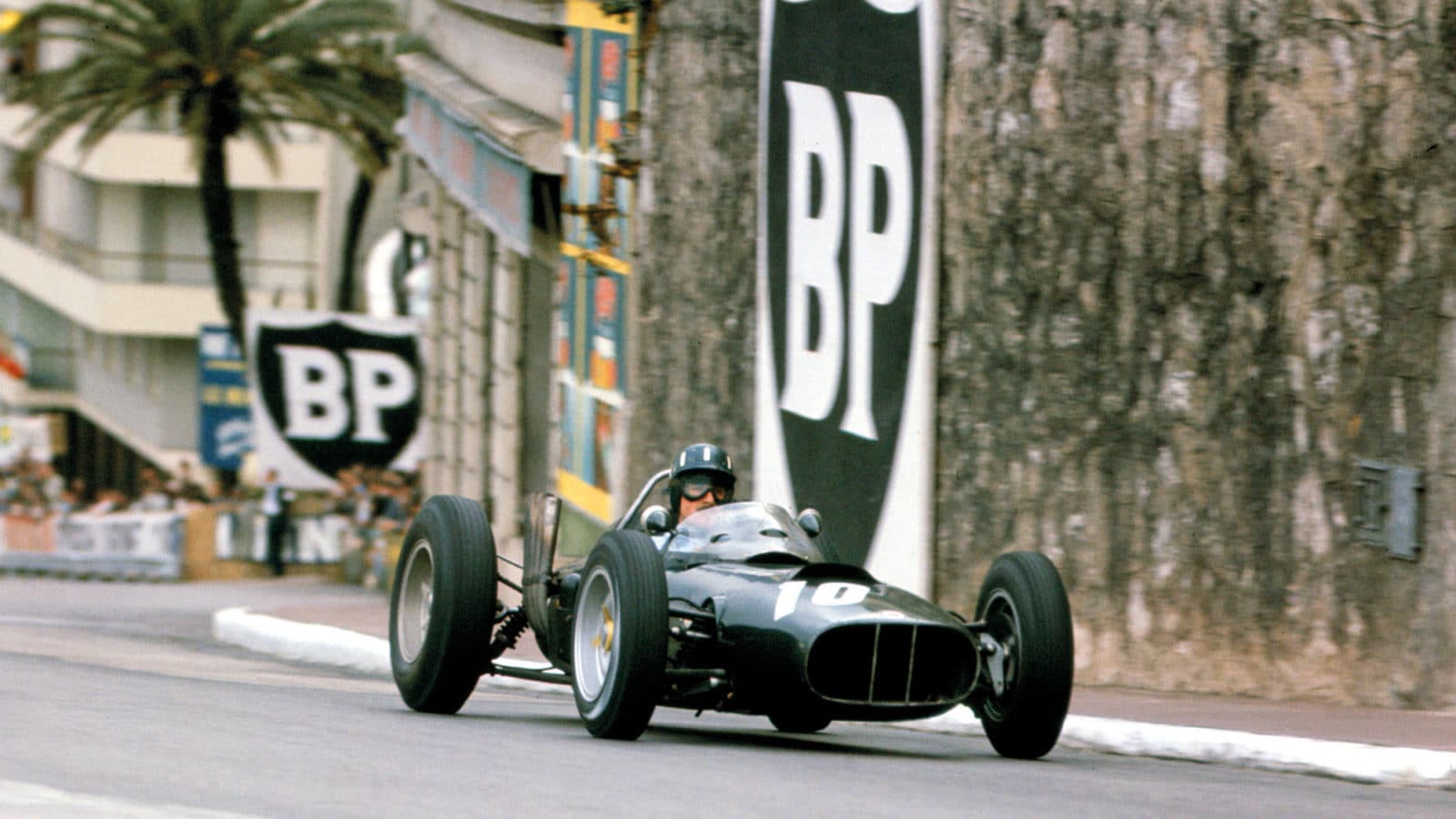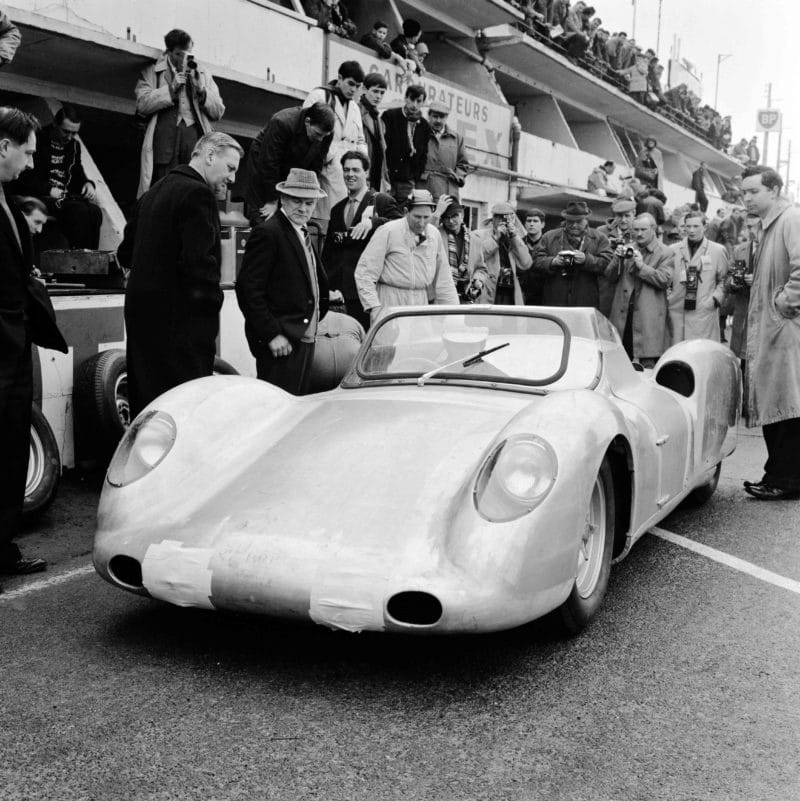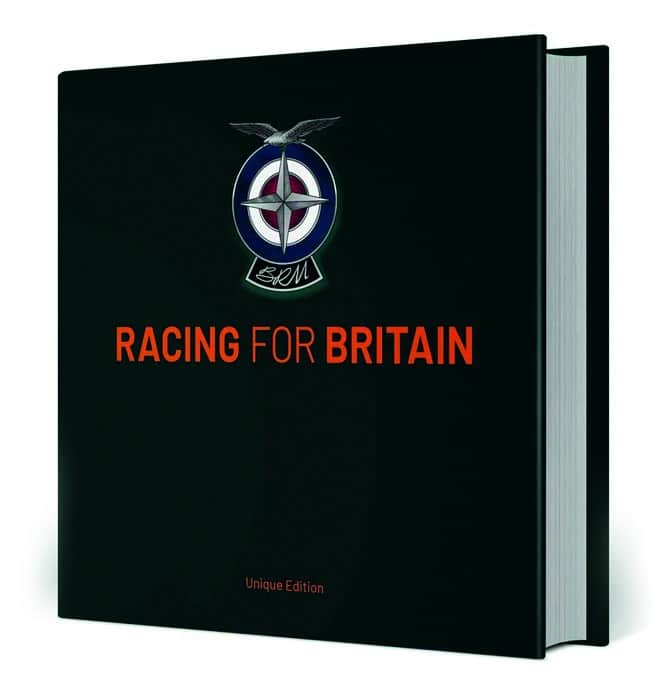BRM: Racing for Britain book review
Gordon Cruickshank reviews a new BRM history which reveals how the racing team’s flag-waving optimism turned to dust

raham Hill at Monaco in 1962 in the BRM P578, with its shortened nose cowling for ‘street brawls’
Getty Images
Why do we spend more time remembering the glorious failure of the V16 than we do the cars that finally brought grand prix victory to the optimistic BRM marque? Is it just the unparalleled shriek of that centrifugal supercharger? Or maybe it’s that British hang-up about failing with glory, the way we’re as proud of the Dunkirk retreat as we are of D-Day itself. There are new V16s on the way but so far no mention of new-build P578s…
Still, it’s not a lament that can be aimed at this large-format and beautifully produced work, written by historian Ian Wagstaff with BRM expert Doug Nye, and featuring much material from the Owen organisation and family who saved and backed BRM and allowed it to survive as part of a major industrial combine despite a lavish engineering spend that would have sunk an independent firm.
Deep as Doug’s own previous BRM publications went, there’s material here which has not been seen, from photos of trophies the team won and internal reports to telegrams and letters applauding Graham Hill’s 1962 world championship crown. These come from family, clubs, suppliers and drivers such as Jo Bonnier and team pilot Tony Brooks – who adds “such a shame the engine was not ready in 1961!” (when the team had been using the stopgap Climax unit).
The book’s title reminds us that waving the Union Jack was a big part of the BRM ethos; while Cooper, Lotus and the others bought components from common outside sources, BRM was touted as the ‘British Ferrari’, manufacturing its own engines, gearboxes, chassis and running gear, and engineering them to tool-room standards even when there was no necessity. It was not mere jingoism, the book points out – it was all intended to demonstrate industrial capability.
In taking us from 1950s optimism up to the by-then hard-pressed team’s last grand prix car, the P201 of 1974, the authors exploit valuable input from the family. When in 1969 Sir Alfred Owen had to step back for medical reasons, his elder sons took the reins: “We had a massive problem facing us,” says John Owen. “We were over-borrowed and undercapitalised. We were in real trouble with the banks.”

Photographers surround Richie Ginther and the experimental Rover-BRM at Le Mans in 1963
Getty Images
It’s at this point that the “colourful” Louis Stanley steps in. “Stanley certainly had some unconventional ideas,” says the book, “but he did have an ability to attract sponsors and secured the important Yardley deal.”
That livery graced another high-water mark when the team won two grands prix in a row including that Monza sensation in ’71 with Peter Gethin finishing feet ahead of Ronnie Peterson, but as cash and sponsorship became hard to obtain the team went steadily onto shorter commons. Stanley’s scattergun attempt to harvest points by running five cars didn’t help: “There was only me to engineer all five,” recalls designer/engineer Tony Southgate. “There would always be a car in the pits and you could forget what you’d done to each one. It was almost comical.”
With ancient engines, few staff and scratching for cash the end was inevitable, and it came with Louis Stanley blaming the workforce. Thereafter his pale Stanley-BRM entries had little chance.
“We were so slow down the Mulsanne that I remember being passed by a Triumph Spitfire”
It’s not all about single-seaters – the sports and Can-Am racers are in here too as are the gas-turbine cars and even the stillborn ‘Jumping Jeep’ the British Army was investigating. Some lovely graphics of the redesign of the turbine car illustrate the difference a designer can make – it was essentially the same machine underneath. Another expensive cul-de-sac for the company, it nevertheless gained much publicity even though as Stewart wryly points out, “We were so slow down the Mulsanne that I remember being passed by a Triumph Spitfire.”
In the succeeding chapter on the Group 7/Can-Am P154 and P167 sports cars, successful enough in themselves, Howden Ganley laments the Formula 1 programme having precedence. “BRM always seemed to bite off more than they could chew.”
Sponsorship from Alcan in 1972 helped, and there are some appealing drawings of team livery on transporters and team regalia. (There’s a similar set later showing a pitch by Louis Stanley for a BOAC sponsorship package which didn’t come off – another gem from the company archive, along with brochures for BRM wheels which the caption points out were a welcome extra income generator.)
Terrific photos keep it bubbling (I don’t think I’ve seen an F1 car going three-up before) and there is a memory-stirring front cover artwork from Eagle magazine showing Hill in the stack-pipe car at Zandvoort in ’62 – the year BRM led them all. But in among the glories are the tragedies including a sobering reproduction of the order of service from Pedro Rodriguez’s memorial service.
Despite the team’s sad death throes, the book ends with an upbeat tone – about Britain’s primacy in F1, about BRM’s undoubted achievements and laurels, and about the fact that restorers Hall & Hall are carrying on a continuous link to the past. They are effectively the retrospective BRM works team.
It’s an excellent portrayal of the tale, with new material and one you’ll come back to. Among today’s offerings £120 for the numbered limited edition looks very reasonable, though you can spend more on super-special versions, up to £2500 for the Unique Edition – of which there are 17.

|
BRM: Racing for Britain Ian Wagstaff & Doug Nye Porter, £120 |
